Nerine Dorman's Blog, page 54
January 15, 2015
On Alien and Aliens #film
For me this story starts when I was in primary school, back in the mid- to late-1980s in South Africa. We were at the arse end of the world thanks to apartheid, so my gentle readers, you must understand that we were always a little slow to get the good stuff. A movie would release in the US, and if it was popular, it would filter through to us a few months later. And it would take even longer for it to appear on VHS for us to hire.
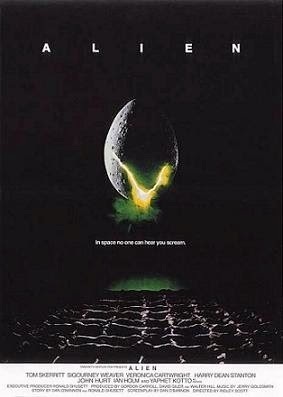 Picture: Wiki CommonsIt was probably when I was in Grade 3, 4 or 5, or thereabouts, that I gradually became aware of Alien and Aliens. And I vowed after listening to the boys in my class go on and on about the gory film and the simply frightening alien to NEVER EVER watch the film.
Picture: Wiki CommonsIt was probably when I was in Grade 3, 4 or 5, or thereabouts, that I gradually became aware of Alien and Aliens. And I vowed after listening to the boys in my class go on and on about the gory film and the simply frightening alien to NEVER EVER watch the film.
I was pretty good about my resolution too, for many years, until I met and married my husband, who by his own admission is a prime example of what happens when a young, bright mind is raised on a steady diet of horror movies (he makes short surreal horror films now in his spare time).
Somehow I still avoided Alien and most of its sequel, Aliens, but I did see and enjoy Alien Resurrection and watched bits of Alien 3 over the husband’s shoulder. But, quelle horreur! I did not see the film that spawned the whole franchise. Ever. Popular culture being what it is, I’d certainly read enough graphic novels and reviews, and had seen plenty of references to piece together the story. I didn’t think it necessary to see the first film. (Besides, remember that vow I made to myself in primary school?)
Besides, dude, those films were made way before the days of CGI. How the hell could they stand the test of time? Or so I thought.
Conversations were had with fellow creatives. The lads decided “We must have an Alien marathon”. I was dubious at first, but then thought, why the hell not. Perhaps it was time to put it all in context. Especially since we’d improved our home entertainment system profoundly from the days of peering at an old, half-blown CRT monitor we’d inherited from a friend.
I need to also add that Sigourney Weaver is one of my favourite female actors, precisely because she’s often cast in strong roles. Death and the Maiden. Hello.
Okay, so let’s do this.
We (sanely) decided to split the films down the middle, hence Alien and Aliens on one night, and at some point soon we’ll do the other two. Directors respectively are Ridley Scott and James Cameron. Weaver obviously follows through the entire series.
At this point I also need to highlight another reason why I’ve found the Alien franchise so alluring, and the reason is the Swiss Surrealist HR Giger. I’ve held a long love-hate fixation with his art over the years, and his involvement with the film started quite by the by even before he was consulted regarding the design. Screenwriter Dan O’Bannon crossed paths with him while working on the failed Alejandro Jadorowsky version of Dune. So the influence was there while O’Bannon conceived of the screenplay with his mate Ronald Shusett, and they were instrumental in getting him on board by the time they got round to production.
Something else that needs to be considered regarding the success of Alien, was the context in which it came into being. Remember that Star Wars was a huge, rip-roaring success for the SF genre in 1977, so it was also a case of O’Bannon and Shusett being in the right place at the right time with their screenplay.
I’d like to think that the contrast between the two films also played a role in its success. In Star Wars we have a rollicking space opera of epic proportions. In Alien, we are faced with the stark sterility of space, where mankind becomes prey to a superior biological organism. We are stripped of the romance and are faced to face with the primal danger of the hunter and the hunted.
To find oneself toppled from one’s post at the apex of the food chain is a deeply unsettling thought. Add to that the aesthetics of the Xenomorph (as the alien organism is known), and the way violation of others lies at the heart of its very existence (its sexual reproduction results in the oral rape of its host species). All unsettling, this blend of sex and death. What makes it even more frightening is that we are not able to reason with this life, whose sole motivation is so similar to ours – the Xenomorph wants to live, and will make use of whichever resources are available to do so. Humanity is merely a means to an end. And it doesn’t rest well to be relegated to a food source and a form of reproduction, does it?
In the second film, the themes of motherhood are also explored, which becomes rather unsettling when considering the role of the Xenomorph queen and the way she cares for her babies when compared to Ellen Ripley trying to make up for the fact that she missed out on being a mother to her long-dead daughter (floating about in stasis can play havoc with your timeline).
In discussion with the husband afterward, I realised also that another big theme running throughout both movies was that of corporate greed. The Weyland company owns the commercial vessel Nostromo on which Ripley is a crew member. It’s thanks to the company requiring an alien retrieved with complete disregard to the crew’s safety that is pivotal in the catastrophe. (And the reason for Ash countermanding Ripley’s quarantine order becomes even more clear.) In Aliens, an entire colony forfeits their lives so that Weyland can have access to the Xenomorph.
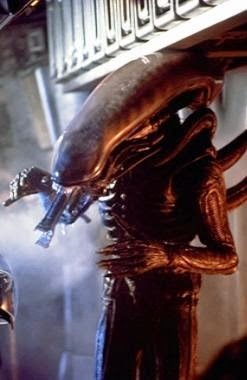 Picture: Wiki CommonsThe question is asked: who is the real monster? The Xenomorph whose savagery is born out of natural instinct, or humanity, which will willingly turn on its own kind in order to further its aims?
Picture: Wiki CommonsThe question is asked: who is the real monster? The Xenomorph whose savagery is born out of natural instinct, or humanity, which will willingly turn on its own kind in order to further its aims?
As for my initial, childhood squeamishness, I went into the film with the expectation that everyone would die except for Ripley. Which was a far more healthier attitude to have. “Will he/she survive?” became more a case of “In what grisly manner and when will this person die?”
Both Scott and Cameron are able directors, who are adept in building and maintaining tension. Despite the lack of the almost ubiquitous CGI we’ve become to know and love for our cinema, neither director gives us overlong, detailed views of the Xenomorph. Instead, use of selected focus, light, sound and framing, the supreme predator is implied rather than revealed, and becomes all the more frightening because our imaginations have to fill in the missing details. (Perhaps our contemporary filmmakers can learn a thing or two from these older films, which I feel in a way are quite superior to the bad rash of Too Much Awesome afflicting contemporary cinema).
What starts out fairly mundane, is gradually unveiled in a full, unrelenting horror, for which we are woefully inadequately prepared. These two films straddle several genres (SF/horror/thriller) at the pinnacle of their craft, and over the intervening years and despite such massive leaps in filmmaking that give us dragons and massive mechs, have lost none of their power to cause us to suspend disbelief.
Oh, and I screamed. I screamed like a little girl at all the appropriate parts. And I loved every minute of it.
Sources:
“Alien (film)” Wikipedia n.p. 2015. January 13, 2015 <http://en.wikipedia.org/wiki/Alien_%28film%29>
“Alien (Creature in Alien Franchise) n.p. 2015. January 13, 2015 <http://en.wikipedia.org/wiki/Alien_(creature_in_Alien_franchise)#Concept_and_creation>
 Picture: Wiki CommonsIt was probably when I was in Grade 3, 4 or 5, or thereabouts, that I gradually became aware of Alien and Aliens. And I vowed after listening to the boys in my class go on and on about the gory film and the simply frightening alien to NEVER EVER watch the film.
Picture: Wiki CommonsIt was probably when I was in Grade 3, 4 or 5, or thereabouts, that I gradually became aware of Alien and Aliens. And I vowed after listening to the boys in my class go on and on about the gory film and the simply frightening alien to NEVER EVER watch the film.I was pretty good about my resolution too, for many years, until I met and married my husband, who by his own admission is a prime example of what happens when a young, bright mind is raised on a steady diet of horror movies (he makes short surreal horror films now in his spare time).
Somehow I still avoided Alien and most of its sequel, Aliens, but I did see and enjoy Alien Resurrection and watched bits of Alien 3 over the husband’s shoulder. But, quelle horreur! I did not see the film that spawned the whole franchise. Ever. Popular culture being what it is, I’d certainly read enough graphic novels and reviews, and had seen plenty of references to piece together the story. I didn’t think it necessary to see the first film. (Besides, remember that vow I made to myself in primary school?)
Besides, dude, those films were made way before the days of CGI. How the hell could they stand the test of time? Or so I thought.
Conversations were had with fellow creatives. The lads decided “We must have an Alien marathon”. I was dubious at first, but then thought, why the hell not. Perhaps it was time to put it all in context. Especially since we’d improved our home entertainment system profoundly from the days of peering at an old, half-blown CRT monitor we’d inherited from a friend.
I need to also add that Sigourney Weaver is one of my favourite female actors, precisely because she’s often cast in strong roles. Death and the Maiden. Hello.
Okay, so let’s do this.
We (sanely) decided to split the films down the middle, hence Alien and Aliens on one night, and at some point soon we’ll do the other two. Directors respectively are Ridley Scott and James Cameron. Weaver obviously follows through the entire series.
At this point I also need to highlight another reason why I’ve found the Alien franchise so alluring, and the reason is the Swiss Surrealist HR Giger. I’ve held a long love-hate fixation with his art over the years, and his involvement with the film started quite by the by even before he was consulted regarding the design. Screenwriter Dan O’Bannon crossed paths with him while working on the failed Alejandro Jadorowsky version of Dune. So the influence was there while O’Bannon conceived of the screenplay with his mate Ronald Shusett, and they were instrumental in getting him on board by the time they got round to production.
Something else that needs to be considered regarding the success of Alien, was the context in which it came into being. Remember that Star Wars was a huge, rip-roaring success for the SF genre in 1977, so it was also a case of O’Bannon and Shusett being in the right place at the right time with their screenplay.
I’d like to think that the contrast between the two films also played a role in its success. In Star Wars we have a rollicking space opera of epic proportions. In Alien, we are faced with the stark sterility of space, where mankind becomes prey to a superior biological organism. We are stripped of the romance and are faced to face with the primal danger of the hunter and the hunted.
To find oneself toppled from one’s post at the apex of the food chain is a deeply unsettling thought. Add to that the aesthetics of the Xenomorph (as the alien organism is known), and the way violation of others lies at the heart of its very existence (its sexual reproduction results in the oral rape of its host species). All unsettling, this blend of sex and death. What makes it even more frightening is that we are not able to reason with this life, whose sole motivation is so similar to ours – the Xenomorph wants to live, and will make use of whichever resources are available to do so. Humanity is merely a means to an end. And it doesn’t rest well to be relegated to a food source and a form of reproduction, does it?
In the second film, the themes of motherhood are also explored, which becomes rather unsettling when considering the role of the Xenomorph queen and the way she cares for her babies when compared to Ellen Ripley trying to make up for the fact that she missed out on being a mother to her long-dead daughter (floating about in stasis can play havoc with your timeline).
In discussion with the husband afterward, I realised also that another big theme running throughout both movies was that of corporate greed. The Weyland company owns the commercial vessel Nostromo on which Ripley is a crew member. It’s thanks to the company requiring an alien retrieved with complete disregard to the crew’s safety that is pivotal in the catastrophe. (And the reason for Ash countermanding Ripley’s quarantine order becomes even more clear.) In Aliens, an entire colony forfeits their lives so that Weyland can have access to the Xenomorph.
 Picture: Wiki CommonsThe question is asked: who is the real monster? The Xenomorph whose savagery is born out of natural instinct, or humanity, which will willingly turn on its own kind in order to further its aims?
Picture: Wiki CommonsThe question is asked: who is the real monster? The Xenomorph whose savagery is born out of natural instinct, or humanity, which will willingly turn on its own kind in order to further its aims?As for my initial, childhood squeamishness, I went into the film with the expectation that everyone would die except for Ripley. Which was a far more healthier attitude to have. “Will he/she survive?” became more a case of “In what grisly manner and when will this person die?”
Both Scott and Cameron are able directors, who are adept in building and maintaining tension. Despite the lack of the almost ubiquitous CGI we’ve become to know and love for our cinema, neither director gives us overlong, detailed views of the Xenomorph. Instead, use of selected focus, light, sound and framing, the supreme predator is implied rather than revealed, and becomes all the more frightening because our imaginations have to fill in the missing details. (Perhaps our contemporary filmmakers can learn a thing or two from these older films, which I feel in a way are quite superior to the bad rash of Too Much Awesome afflicting contemporary cinema).
What starts out fairly mundane, is gradually unveiled in a full, unrelenting horror, for which we are woefully inadequately prepared. These two films straddle several genres (SF/horror/thriller) at the pinnacle of their craft, and over the intervening years and despite such massive leaps in filmmaking that give us dragons and massive mechs, have lost none of their power to cause us to suspend disbelief.
Oh, and I screamed. I screamed like a little girl at all the appropriate parts. And I loved every minute of it.
Sources:
“Alien (film)” Wikipedia n.p. 2015. January 13, 2015 <http://en.wikipedia.org/wiki/Alien_%28film%29>
“Alien (Creature in Alien Franchise) n.p. 2015. January 13, 2015 <http://en.wikipedia.org/wiki/Alien_(creature_in_Alien_franchise)#Concept_and_creation>
Published on January 15, 2015 23:29
January 13, 2015
The Priest of Blood by Douglas Clegg #review
Title:
The Priest of Blood (The Vampyricon book one)
Author: Douglas Clegg
Publisher: Alkemara Press
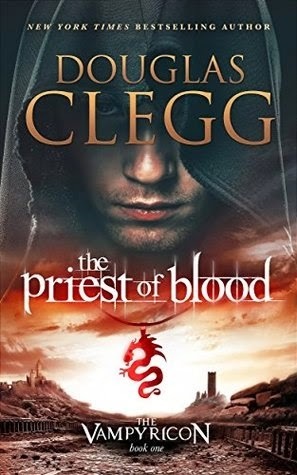 Pardon the pun, but I’m a sucker for vampire fiction, and especially when it has historical elements. In that regard, The Priest of Blood worked well for me as a reader. Turned by the vampyre Pythia, while involved in the Crusades, Falconer recalls his life growing up as the bastard offspring of the village whore.
Pardon the pun, but I’m a sucker for vampire fiction, and especially when it has historical elements. In that regard, The Priest of Blood worked well for me as a reader. Turned by the vampyre Pythia, while involved in the Crusades, Falconer recalls his life growing up as the bastard offspring of the village whore.
Much of the book tells of his early years in Brittany, and of the boy’s need to prove his worth considering his humble beginnings. We learn that Falconer has a gift for working with birds and eventually is employed by the local baron.
But life for Falconer is a trial. He never quite fits in, and an ill-starred passion for a woman far beyond his station results in his being sent to fight in the Holy Land, where he ultimately meets his doom.
Yet among the damned, it appears that Falconer is exalted – a chosen one and their Priest of Blood, with all that the role entails. He and his companions embark on a journey to their source in order to gain a better understanding of their kind and to find a solution to eradicate a frailty in their bloodline. As for what they find once they discover their goal – their actions will have far-reaching ramifications.
And that’s pretty much what book one is about, since it functions as a prologue for what I assume to be more to follow. Essentially, if you’re waiting for things to get off the ground, you’ll be in for a disappointment.
That being said, what I did enjoy was the last part of the story, when the companions really get going in their explorations. the many wonders they discover are fascinating, if not bizarre – and certainly off quite a nice diversion from the usual vampire origin stories. I kept thinking this was Indiana Jones meets The Queen of the Damned.
Clegg weaves a tale on epic proportions, with much depth, though at times I felt I wanted a little more input with regard to the environment – to put it bluntly, a little more “show” to counterbalance his telling. I can’t fault the latter. He does it well, though at times I also feel to detriment of characterisation. I wanted a little more in that department too.
My verdict: this story is wordy and sometimes ponderous, but if you’re a huge fan of vampires, and are a patient reader who has enjoyed Anne Rice, then this may appeal to you.
Author: Douglas Clegg
Publisher: Alkemara Press
 Pardon the pun, but I’m a sucker for vampire fiction, and especially when it has historical elements. In that regard, The Priest of Blood worked well for me as a reader. Turned by the vampyre Pythia, while involved in the Crusades, Falconer recalls his life growing up as the bastard offspring of the village whore.
Pardon the pun, but I’m a sucker for vampire fiction, and especially when it has historical elements. In that regard, The Priest of Blood worked well for me as a reader. Turned by the vampyre Pythia, while involved in the Crusades, Falconer recalls his life growing up as the bastard offspring of the village whore.Much of the book tells of his early years in Brittany, and of the boy’s need to prove his worth considering his humble beginnings. We learn that Falconer has a gift for working with birds and eventually is employed by the local baron.
But life for Falconer is a trial. He never quite fits in, and an ill-starred passion for a woman far beyond his station results in his being sent to fight in the Holy Land, where he ultimately meets his doom.
Yet among the damned, it appears that Falconer is exalted – a chosen one and their Priest of Blood, with all that the role entails. He and his companions embark on a journey to their source in order to gain a better understanding of their kind and to find a solution to eradicate a frailty in their bloodline. As for what they find once they discover their goal – their actions will have far-reaching ramifications.
And that’s pretty much what book one is about, since it functions as a prologue for what I assume to be more to follow. Essentially, if you’re waiting for things to get off the ground, you’ll be in for a disappointment.
That being said, what I did enjoy was the last part of the story, when the companions really get going in their explorations. the many wonders they discover are fascinating, if not bizarre – and certainly off quite a nice diversion from the usual vampire origin stories. I kept thinking this was Indiana Jones meets The Queen of the Damned.
Clegg weaves a tale on epic proportions, with much depth, though at times I felt I wanted a little more input with regard to the environment – to put it bluntly, a little more “show” to counterbalance his telling. I can’t fault the latter. He does it well, though at times I also feel to detriment of characterisation. I wanted a little more in that department too.
My verdict: this story is wordy and sometimes ponderous, but if you’re a huge fan of vampires, and are a patient reader who has enjoyed Anne Rice, then this may appeal to you.
Published on January 13, 2015 12:03
January 11, 2015
My Year in Books 2014: The Stuff I Wrote
In hindsight, there was quite a lot happening for me in my own writing. It's clear, also, that it's been a year of mostly short stories for me. Which still makes me shake my head and laugh a little, because I've never really pegged myself as an author of short stories. For what it's worth, let's look at it...
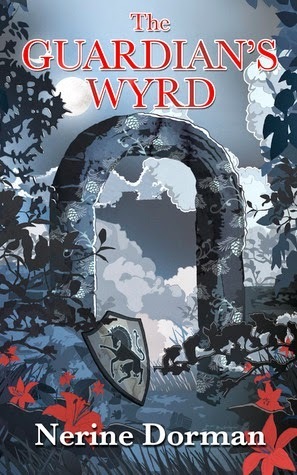 The Guardian's Wyrd
came out in ebook form via Word Smack, a small South African publisher of speculative fiction. When I have to sum up the book very briefly, I tell people it's Harry Potter meets Narnia. Although the protagonists are 15 going on 16, this is really a story for all age groups from about 12 upward. We meet Jay September, who realises his role as a Guardian to one very spoilt prince. Essentially, I asked the question, what would happen if it was the prince who needed rescuing? If you look to the sidebar on this page, you'll see the print cover, which was illustrated by Daniël Hugo, which I brought out myself.
The Guardian's Wyrd
came out in ebook form via Word Smack, a small South African publisher of speculative fiction. When I have to sum up the book very briefly, I tell people it's Harry Potter meets Narnia. Although the protagonists are 15 going on 16, this is really a story for all age groups from about 12 upward. We meet Jay September, who realises his role as a Guardian to one very spoilt prince. Essentially, I asked the question, what would happen if it was the prince who needed rescuing? If you look to the sidebar on this page, you'll see the print cover, which was illustrated by Daniël Hugo, which I brought out myself.
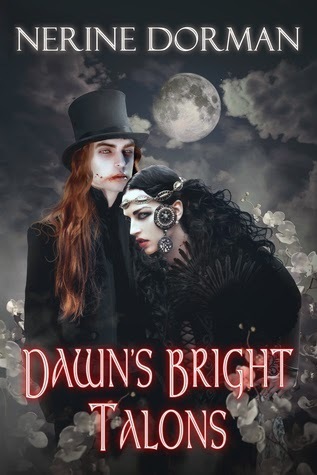 Dawn's Bright Talons
was my other big book for the year. I put a lot of heart and soul into the story, which I've been told is Anne Rice's vampires dropped into pseudo-Victorian fantasy. The novel was many years in the making, mainly because it languished on full sub with The Big Publisher We Will Not Name, who took about a year to decide that no, they couldn't make up their mind. Well, Crossroad Press snapped the story up, and I had fantastic editorial guidance from David Niall Wilson. I also had a say in the cover art, so I commissioned the rather bedazzling Nathalia Suellen to handle the cover art.
Dawn's Bright Talons
was my other big book for the year. I put a lot of heart and soul into the story, which I've been told is Anne Rice's vampires dropped into pseudo-Victorian fantasy. The novel was many years in the making, mainly because it languished on full sub with The Big Publisher We Will Not Name, who took about a year to decide that no, they couldn't make up their mind. Well, Crossroad Press snapped the story up, and I had fantastic editorial guidance from David Niall Wilson. I also had a say in the cover art, so I commissioned the rather bedazzling Nathalia Suellen to handle the cover art.
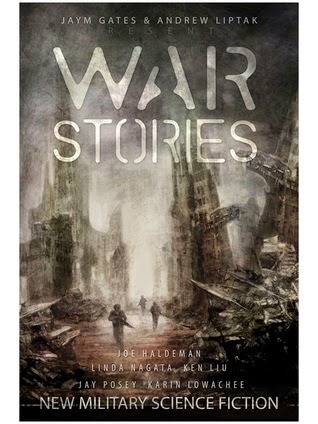 Another huge highlight for me during 2014 was getting a story published in Apex Publishing's
War Stories
, in which I got to work with two dynamic editors, Andrew Liptak and Jaym Gates. The concept was simple: they collected stories that dealt with the far-reaching impact of war on those who participated in it, or were affected by it. My story is entitled "Only the Stars and the Void Between" and tells of a special ops soldier who returns to her home, only to discover how things have changed in her absence.
Another huge highlight for me during 2014 was getting a story published in Apex Publishing's
War Stories
, in which I got to work with two dynamic editors, Andrew Liptak and Jaym Gates. The concept was simple: they collected stories that dealt with the far-reaching impact of war on those who participated in it, or were affected by it. My story is entitled "Only the Stars and the Void Between" and tells of a special ops soldier who returns to her home, only to discover how things have changed in her absence.
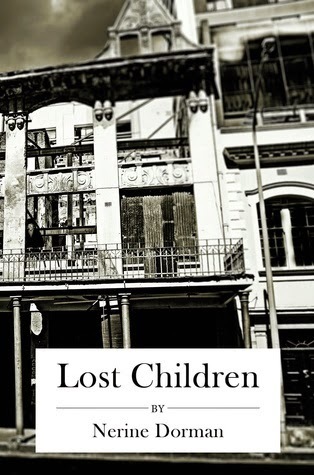 Now that I'm writing a lot more short fiction, I've found that from time to time I'll sit with stories that don't end up finding homes. Granted, this isn't happening as often as it used to, but I still thought it fitting to collect a retrospective. Some stories in to
Lost Children
were initially published on my blog, and a few others were floating about at odd ends. The image on the front cover was taken by my good friend HJ Lombard, and the design was by Icy Sedgwick, another of my friends. This collection was put together purely for the sheer joy of making good art.
Now that I'm writing a lot more short fiction, I've found that from time to time I'll sit with stories that don't end up finding homes. Granted, this isn't happening as often as it used to, but I still thought it fitting to collect a retrospective. Some stories in to
Lost Children
were initially published on my blog, and a few others were floating about at odd ends. The image on the front cover was taken by my good friend HJ Lombard, and the design was by Icy Sedgwick, another of my friends. This collection was put together purely for the sheer joy of making good art.
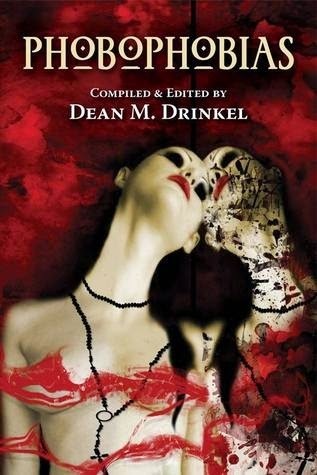 A good while ago, Dean M Drinkel invited me to submit to
Phobophobias
, which I duly did, and ended up writing a story about my Ibr (dream horses that I do hope to one day turn into a full-length story). I'm quite fond of this tale, and I hope readers like it too.
A good while ago, Dean M Drinkel invited me to submit to
Phobophobias
, which I duly did, and ended up writing a story about my Ibr (dream horses that I do hope to one day turn into a full-length story). I'm quite fond of this tale, and I hope readers like it too.
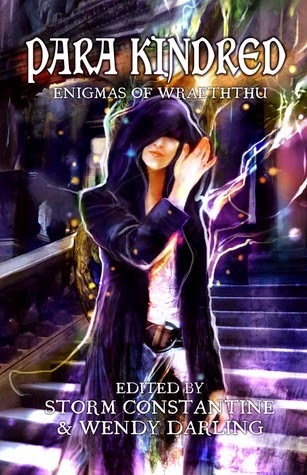 Of course a great highlight for me was getting a story published as part of
Para Kindred
is a lovely mixed collection of stories about the magical Wraeththu, and what possible new forms could come into being. Watch out for the upcoming Para Animalia anthology, as there's a chance I'll be appearing in that too (that's if I get a chance to finish what I'm writing). Storm Constantine's Wraeththu Mythos. Anyone who knows me well will understand how much Storm's writing has influenced my own, so this was really special for me to be part of, and to get to work with Storm too.
Of course a great highlight for me was getting a story published as part of
Para Kindred
is a lovely mixed collection of stories about the magical Wraeththu, and what possible new forms could come into being. Watch out for the upcoming Para Animalia anthology, as there's a chance I'll be appearing in that too (that's if I get a chance to finish what I'm writing). Storm Constantine's Wraeththu Mythos. Anyone who knows me well will understand how much Storm's writing has influenced my own, so this was really special for me to be part of, and to get to work with Storm too.
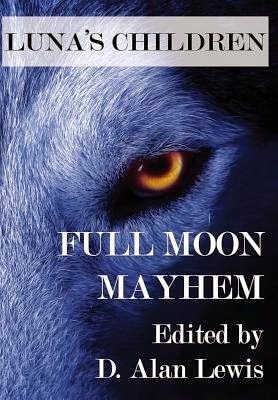 I do rather love werewolves, and it was lots of fun writing the story that appears in
Full Moon Mayhem
, in which I take my lupine friends to Africa as an envisioning of African hunting dogs as the weres, and also the possible issues surrounding their social structure, and the sorts of problems they'd encounter. And I really *do* love the cover art for this one.
I do rather love werewolves, and it was lots of fun writing the story that appears in
Full Moon Mayhem
, in which I take my lupine friends to Africa as an envisioning of African hunting dogs as the weres, and also the possible issues surrounding their social structure, and the sorts of problems they'd encounter. And I really *do* love the cover art for this one.
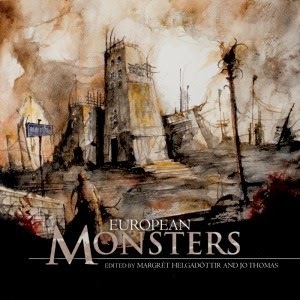 This year also so my participation in Fox Spirit's beautifully illustrated anthology, European Monsters which is a coffee table book in which European monsters get given their horror elements back. I don't think there's anything cute and fuzzy in this one. I chose to write about the Valravn, which is a rather nasty bird.
This year also so my participation in Fox Spirit's beautifully illustrated anthology, European Monsters which is a coffee table book in which European monsters get given their horror elements back. I don't think there's anything cute and fuzzy in this one. I chose to write about the Valravn, which is a rather nasty bird.
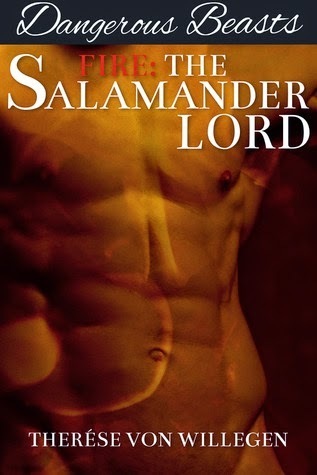 Last, but not least, I did write up a bit of erotic fantasy under my pen name of Therése von Willegen.
Fire: The Salamander Lord
is about a witch's encounter with a fire spirit that is impossible to resist. I'll leave this one right here... It's fun and filled with, well, a lot of spice.
Last, but not least, I did write up a bit of erotic fantasy under my pen name of Therése von Willegen.
Fire: The Salamander Lord
is about a witch's encounter with a fire spirit that is impossible to resist. I'll leave this one right here... It's fun and filled with, well, a lot of spice.
And that's that for now. There're already a few exciting projects lined up for this year, but considering that I'm currently busy with my BA in Creative Writing, I suppose it means I'm going to slow down a bit with my *actual* creative writing while I wrestle with such weighty topics as literary theory, literature studies and Greek mythology. But it's all for the best at the end of the day, and I will still sneak in time where I can to create stories to whisk you away to stranger places.
 The Guardian's Wyrd
came out in ebook form via Word Smack, a small South African publisher of speculative fiction. When I have to sum up the book very briefly, I tell people it's Harry Potter meets Narnia. Although the protagonists are 15 going on 16, this is really a story for all age groups from about 12 upward. We meet Jay September, who realises his role as a Guardian to one very spoilt prince. Essentially, I asked the question, what would happen if it was the prince who needed rescuing? If you look to the sidebar on this page, you'll see the print cover, which was illustrated by Daniël Hugo, which I brought out myself.
The Guardian's Wyrd
came out in ebook form via Word Smack, a small South African publisher of speculative fiction. When I have to sum up the book very briefly, I tell people it's Harry Potter meets Narnia. Although the protagonists are 15 going on 16, this is really a story for all age groups from about 12 upward. We meet Jay September, who realises his role as a Guardian to one very spoilt prince. Essentially, I asked the question, what would happen if it was the prince who needed rescuing? If you look to the sidebar on this page, you'll see the print cover, which was illustrated by Daniël Hugo, which I brought out myself. Dawn's Bright Talons
was my other big book for the year. I put a lot of heart and soul into the story, which I've been told is Anne Rice's vampires dropped into pseudo-Victorian fantasy. The novel was many years in the making, mainly because it languished on full sub with The Big Publisher We Will Not Name, who took about a year to decide that no, they couldn't make up their mind. Well, Crossroad Press snapped the story up, and I had fantastic editorial guidance from David Niall Wilson. I also had a say in the cover art, so I commissioned the rather bedazzling Nathalia Suellen to handle the cover art.
Dawn's Bright Talons
was my other big book for the year. I put a lot of heart and soul into the story, which I've been told is Anne Rice's vampires dropped into pseudo-Victorian fantasy. The novel was many years in the making, mainly because it languished on full sub with The Big Publisher We Will Not Name, who took about a year to decide that no, they couldn't make up their mind. Well, Crossroad Press snapped the story up, and I had fantastic editorial guidance from David Niall Wilson. I also had a say in the cover art, so I commissioned the rather bedazzling Nathalia Suellen to handle the cover art. Another huge highlight for me during 2014 was getting a story published in Apex Publishing's
War Stories
, in which I got to work with two dynamic editors, Andrew Liptak and Jaym Gates. The concept was simple: they collected stories that dealt with the far-reaching impact of war on those who participated in it, or were affected by it. My story is entitled "Only the Stars and the Void Between" and tells of a special ops soldier who returns to her home, only to discover how things have changed in her absence.
Another huge highlight for me during 2014 was getting a story published in Apex Publishing's
War Stories
, in which I got to work with two dynamic editors, Andrew Liptak and Jaym Gates. The concept was simple: they collected stories that dealt with the far-reaching impact of war on those who participated in it, or were affected by it. My story is entitled "Only the Stars and the Void Between" and tells of a special ops soldier who returns to her home, only to discover how things have changed in her absence. Now that I'm writing a lot more short fiction, I've found that from time to time I'll sit with stories that don't end up finding homes. Granted, this isn't happening as often as it used to, but I still thought it fitting to collect a retrospective. Some stories in to
Lost Children
were initially published on my blog, and a few others were floating about at odd ends. The image on the front cover was taken by my good friend HJ Lombard, and the design was by Icy Sedgwick, another of my friends. This collection was put together purely for the sheer joy of making good art.
Now that I'm writing a lot more short fiction, I've found that from time to time I'll sit with stories that don't end up finding homes. Granted, this isn't happening as often as it used to, but I still thought it fitting to collect a retrospective. Some stories in to
Lost Children
were initially published on my blog, and a few others were floating about at odd ends. The image on the front cover was taken by my good friend HJ Lombard, and the design was by Icy Sedgwick, another of my friends. This collection was put together purely for the sheer joy of making good art. A good while ago, Dean M Drinkel invited me to submit to
Phobophobias
, which I duly did, and ended up writing a story about my Ibr (dream horses that I do hope to one day turn into a full-length story). I'm quite fond of this tale, and I hope readers like it too.
A good while ago, Dean M Drinkel invited me to submit to
Phobophobias
, which I duly did, and ended up writing a story about my Ibr (dream horses that I do hope to one day turn into a full-length story). I'm quite fond of this tale, and I hope readers like it too. Of course a great highlight for me was getting a story published as part of
Para Kindred
is a lovely mixed collection of stories about the magical Wraeththu, and what possible new forms could come into being. Watch out for the upcoming Para Animalia anthology, as there's a chance I'll be appearing in that too (that's if I get a chance to finish what I'm writing). Storm Constantine's Wraeththu Mythos. Anyone who knows me well will understand how much Storm's writing has influenced my own, so this was really special for me to be part of, and to get to work with Storm too.
Of course a great highlight for me was getting a story published as part of
Para Kindred
is a lovely mixed collection of stories about the magical Wraeththu, and what possible new forms could come into being. Watch out for the upcoming Para Animalia anthology, as there's a chance I'll be appearing in that too (that's if I get a chance to finish what I'm writing). Storm Constantine's Wraeththu Mythos. Anyone who knows me well will understand how much Storm's writing has influenced my own, so this was really special for me to be part of, and to get to work with Storm too. I do rather love werewolves, and it was lots of fun writing the story that appears in
Full Moon Mayhem
, in which I take my lupine friends to Africa as an envisioning of African hunting dogs as the weres, and also the possible issues surrounding their social structure, and the sorts of problems they'd encounter. And I really *do* love the cover art for this one.
I do rather love werewolves, and it was lots of fun writing the story that appears in
Full Moon Mayhem
, in which I take my lupine friends to Africa as an envisioning of African hunting dogs as the weres, and also the possible issues surrounding their social structure, and the sorts of problems they'd encounter. And I really *do* love the cover art for this one. This year also so my participation in Fox Spirit's beautifully illustrated anthology, European Monsters which is a coffee table book in which European monsters get given their horror elements back. I don't think there's anything cute and fuzzy in this one. I chose to write about the Valravn, which is a rather nasty bird.
This year also so my participation in Fox Spirit's beautifully illustrated anthology, European Monsters which is a coffee table book in which European monsters get given their horror elements back. I don't think there's anything cute and fuzzy in this one. I chose to write about the Valravn, which is a rather nasty bird. Last, but not least, I did write up a bit of erotic fantasy under my pen name of Therése von Willegen.
Fire: The Salamander Lord
is about a witch's encounter with a fire spirit that is impossible to resist. I'll leave this one right here... It's fun and filled with, well, a lot of spice.
Last, but not least, I did write up a bit of erotic fantasy under my pen name of Therése von Willegen.
Fire: The Salamander Lord
is about a witch's encounter with a fire spirit that is impossible to resist. I'll leave this one right here... It's fun and filled with, well, a lot of spice.And that's that for now. There're already a few exciting projects lined up for this year, but considering that I'm currently busy with my BA in Creative Writing, I suppose it means I'm going to slow down a bit with my *actual* creative writing while I wrestle with such weighty topics as literary theory, literature studies and Greek mythology. But it's all for the best at the end of the day, and I will still sneak in time where I can to create stories to whisk you away to stranger places.
Published on January 11, 2015 14:13
January 8, 2015
It's all about stories...
I’ve always used the terms “saga”, “legend”, and “myth” interchangeably, until I hit a point where my BA studies made me go look a little deeper in the terms.
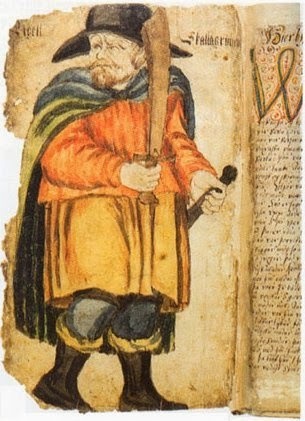 Picture: Wiki CommonsWhen we think “saga”, it’s often in terms of an epic telling or of group of stories, and what first springs to mind are the sagas of the Scandinavian and Germanic people. The word itself is drawn from the Old Norse, and refers to “something said”. Consider a storyteller in an old Viking hall, a horn in one hand as he recounts the stories of saints, kings and heroes of years gone by. Sagas have their origins in oral traditions, and were generally scribed in the 12th and 13th centuries AD.
Picture: Wiki CommonsWhen we think “saga”, it’s often in terms of an epic telling or of group of stories, and what first springs to mind are the sagas of the Scandinavian and Germanic people. The word itself is drawn from the Old Norse, and refers to “something said”. Consider a storyteller in an old Viking hall, a horn in one hand as he recounts the stories of saints, kings and heroes of years gone by. Sagas have their origins in oral traditions, and were generally scribed in the 12th and 13th centuries AD.
Now we get on to legends. I only really had a very vague idea of a legend being a made-up story. That’s partially on the right track. If you look at the tales about the early Christian saints, these fall in the realm of legends, which are believable stories said to have a basis in history. The events described (which allow for the miraculous) are said to be possibly true. Think Helen of Troy, Robin Hood, Vlad the Impaler...
On the other hand, folk tales don’t necessarily have to have any basis in history. They are stories that are shared over the generations in a group of people or a community. Often there is a moral to the story, and the stories touch on certain archetypal customs or values pertinent to the people, either to provide entertainment or to teach something.
Myths may or may not have their origins in truth, and there certainly is no evidence to lay that basis of truth (think of the creation myth found in the bible). The stories have been retold so often, that they’ve been modified and/or highly embellished. Your stories about the doings of the Egyptian, Roman and Greek pantheons fall firmly in the realm of myth. I’d tie this in with the relatively modern concept of the urban myth, where it’s nearly always an event that happened to a friend of a friend, and they swear it’s true… That phantom hitchhiker is real, I promise! ;-)
Many of us grew up having heard of Aesop’s fables. My favourite was the story of the fox and the crow, but in Afrikaner culture, we have the fables of Jakkals en Wolf (jackal and wolf) which I adored while growing up. I’m also considering CJ Langenhoven’s stories about Brolloks en Bittergal. Fables are pure fiction, and have some basis in oral tradition, but they often involve anthropomorphised animals and objects, and regularly result in some sort of moral at the end.
So, if I think a little about what this all is telling me, is that storytelling is an integral part of human culture. It is how we make sense of the world around us, and our relationship with others, and that we’re not so much hung up on the historical facts rather than the message we’re trying to convey. We have a natural tendency to embellish, perhaps for dramatic effect, perhaps to make narratives neater or provide fresh relevance.
Some of these mentioned are quite similar, and I’d group folk tales and fables quite close together, and then sagas and legends together, with myths standing somewhat distant, and possibly with their roots in actual history and folks tales, that have combined into a melange over the years. I’d love to know, what are some of your favourite stories?
Sources:
“Saga” Wikipedia n.p. 2014. January 8, 2015 <http://en.wikipedia.org/wiki/Saga>
“Legend” Wikipedia n.p. 2014. January 8, 2015 <http://en.wikipedia.org/wiki/Legend>
Story Arts “Storytelling in the Classroom n.p. 2000. January 8, 2015 <https://www.storyarts.org/classroom/retelling/findingtales.html>
“Myth” Wikipedia. n.p. 2015. January 8, 2015 <http://simple.wikipedia.org/wiki/Myth>
“Fable” Wikipedia n.p. 2014. January 8, 2015 <http://en.wikipedia.org/wiki/Fable>
 Picture: Wiki CommonsWhen we think “saga”, it’s often in terms of an epic telling or of group of stories, and what first springs to mind are the sagas of the Scandinavian and Germanic people. The word itself is drawn from the Old Norse, and refers to “something said”. Consider a storyteller in an old Viking hall, a horn in one hand as he recounts the stories of saints, kings and heroes of years gone by. Sagas have their origins in oral traditions, and were generally scribed in the 12th and 13th centuries AD.
Picture: Wiki CommonsWhen we think “saga”, it’s often in terms of an epic telling or of group of stories, and what first springs to mind are the sagas of the Scandinavian and Germanic people. The word itself is drawn from the Old Norse, and refers to “something said”. Consider a storyteller in an old Viking hall, a horn in one hand as he recounts the stories of saints, kings and heroes of years gone by. Sagas have their origins in oral traditions, and were generally scribed in the 12th and 13th centuries AD.Now we get on to legends. I only really had a very vague idea of a legend being a made-up story. That’s partially on the right track. If you look at the tales about the early Christian saints, these fall in the realm of legends, which are believable stories said to have a basis in history. The events described (which allow for the miraculous) are said to be possibly true. Think Helen of Troy, Robin Hood, Vlad the Impaler...
On the other hand, folk tales don’t necessarily have to have any basis in history. They are stories that are shared over the generations in a group of people or a community. Often there is a moral to the story, and the stories touch on certain archetypal customs or values pertinent to the people, either to provide entertainment or to teach something.
Myths may or may not have their origins in truth, and there certainly is no evidence to lay that basis of truth (think of the creation myth found in the bible). The stories have been retold so often, that they’ve been modified and/or highly embellished. Your stories about the doings of the Egyptian, Roman and Greek pantheons fall firmly in the realm of myth. I’d tie this in with the relatively modern concept of the urban myth, where it’s nearly always an event that happened to a friend of a friend, and they swear it’s true… That phantom hitchhiker is real, I promise! ;-)
Many of us grew up having heard of Aesop’s fables. My favourite was the story of the fox and the crow, but in Afrikaner culture, we have the fables of Jakkals en Wolf (jackal and wolf) which I adored while growing up. I’m also considering CJ Langenhoven’s stories about Brolloks en Bittergal. Fables are pure fiction, and have some basis in oral tradition, but they often involve anthropomorphised animals and objects, and regularly result in some sort of moral at the end.
So, if I think a little about what this all is telling me, is that storytelling is an integral part of human culture. It is how we make sense of the world around us, and our relationship with others, and that we’re not so much hung up on the historical facts rather than the message we’re trying to convey. We have a natural tendency to embellish, perhaps for dramatic effect, perhaps to make narratives neater or provide fresh relevance.
Some of these mentioned are quite similar, and I’d group folk tales and fables quite close together, and then sagas and legends together, with myths standing somewhat distant, and possibly with their roots in actual history and folks tales, that have combined into a melange over the years. I’d love to know, what are some of your favourite stories?
Sources:
“Saga” Wikipedia n.p. 2014. January 8, 2015 <http://en.wikipedia.org/wiki/Saga>
“Legend” Wikipedia n.p. 2014. January 8, 2015 <http://en.wikipedia.org/wiki/Legend>
Story Arts “Storytelling in the Classroom n.p. 2000. January 8, 2015 <https://www.storyarts.org/classroom/retelling/findingtales.html>
“Myth” Wikipedia. n.p. 2015. January 8, 2015 <http://simple.wikipedia.org/wiki/Myth>
“Fable” Wikipedia n.p. 2014. January 8, 2015 <http://en.wikipedia.org/wiki/Fable>
Published on January 08, 2015 11:23
January 7, 2015
Magician by Raymond E Feist #review
Title:
Magician
Author: Raymond E Feist
Publisher: Voyager, 2012
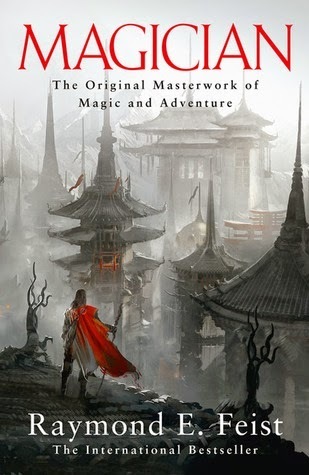 When I heard that fantasy author Raymond E Feist was visiting South Africa during Open Book 2014, I was super excited. Apart from Terry Pratchett, I couldn’t recall such a luminary of the fantasy genre visiting our shores in ages. I also cringed inwardly because in my career as a voracious reader of fantasy, never once had I succeeded in reading anything by Feist.
When I heard that fantasy author Raymond E Feist was visiting South Africa during Open Book 2014, I was super excited. Apart from Terry Pratchett, I couldn’t recall such a luminary of the fantasy genre visiting our shores in ages. I also cringed inwardly because in my career as a voracious reader of fantasy, never once had I succeeded in reading anything by Feist.
From meeting the man and being in the audience during a panel discussion hosted by Marius du Plessis (Fox & Raven), and also featuring Mike Carey and Dave-Brendon de Burgh, it became clear from the outset that Feist is a man who deeply loves the fantasy genre. Not only is he immersed in fantasy, but his enthusiasm is impossible to resist.
So, it is within this context, that I tackled Magician, his first in this epic series. Vaguely I do recall that I tried to read this book many years ago, and that I abandoned it for some reason. Now at least I have a better idea of why I never finished reading the book. Much as I adore the author (and if I am given a chance to talk fantasy with him, could probably while away a night until the wee hours), his writing simply doesn’t gel with me.
Unfortunate as this is, I suspect it is a matter of taste, and bears no reflection on the man himself or his legions of fans.
In Magician, we meet the orphan Pug, who has grown up in and around a duke’s keep. He, and his best friend Tomas, are, as boys do, constantly getting into trouble – and it’s their adventuresome spirits that put them first on the scene when a mysterious ship runs aground near their home.
That event is the beginning of an invasion by a warlike people, who control rifts from another world, and Pug and Tomas soon find themselves drawn into the conflict – and vastly separate life paths. Pug follows his calling as magician, and Tomas dreams of becoming a great warrior who gains the love of an elven queen.
The setting is straight-up, Tolkienesque-style fantasy, complete with dragons, elves and dwarves, which in itself is not a bad thing, unless you’re expecting something a little more. I did find myself annoyed by the two-dimensionality of the (few) female characters, but as I’ve yet to read more of Feist’s work, I can’t say whether this aspect of his writing matures and diversifies.
I think if I’d pressed on with reading this book when I’d been much younger, I may have enjoyed it more, or perhaps I’ve had my tastes in reading matter somewhat tainted by the masters of GrimDark. It just simply didn’t blow me out of the water with regard to complexity of the narrative structure nor the characterisation, which felt a little flat to me. However, so far as an introduction to the fantasy genre, and a place marker for its development over the years, this book remains a classic.
Author: Raymond E Feist
Publisher: Voyager, 2012
 When I heard that fantasy author Raymond E Feist was visiting South Africa during Open Book 2014, I was super excited. Apart from Terry Pratchett, I couldn’t recall such a luminary of the fantasy genre visiting our shores in ages. I also cringed inwardly because in my career as a voracious reader of fantasy, never once had I succeeded in reading anything by Feist.
When I heard that fantasy author Raymond E Feist was visiting South Africa during Open Book 2014, I was super excited. Apart from Terry Pratchett, I couldn’t recall such a luminary of the fantasy genre visiting our shores in ages. I also cringed inwardly because in my career as a voracious reader of fantasy, never once had I succeeded in reading anything by Feist.From meeting the man and being in the audience during a panel discussion hosted by Marius du Plessis (Fox & Raven), and also featuring Mike Carey and Dave-Brendon de Burgh, it became clear from the outset that Feist is a man who deeply loves the fantasy genre. Not only is he immersed in fantasy, but his enthusiasm is impossible to resist.
So, it is within this context, that I tackled Magician, his first in this epic series. Vaguely I do recall that I tried to read this book many years ago, and that I abandoned it for some reason. Now at least I have a better idea of why I never finished reading the book. Much as I adore the author (and if I am given a chance to talk fantasy with him, could probably while away a night until the wee hours), his writing simply doesn’t gel with me.
Unfortunate as this is, I suspect it is a matter of taste, and bears no reflection on the man himself or his legions of fans.
In Magician, we meet the orphan Pug, who has grown up in and around a duke’s keep. He, and his best friend Tomas, are, as boys do, constantly getting into trouble – and it’s their adventuresome spirits that put them first on the scene when a mysterious ship runs aground near their home.
That event is the beginning of an invasion by a warlike people, who control rifts from another world, and Pug and Tomas soon find themselves drawn into the conflict – and vastly separate life paths. Pug follows his calling as magician, and Tomas dreams of becoming a great warrior who gains the love of an elven queen.
The setting is straight-up, Tolkienesque-style fantasy, complete with dragons, elves and dwarves, which in itself is not a bad thing, unless you’re expecting something a little more. I did find myself annoyed by the two-dimensionality of the (few) female characters, but as I’ve yet to read more of Feist’s work, I can’t say whether this aspect of his writing matures and diversifies.
I think if I’d pressed on with reading this book when I’d been much younger, I may have enjoyed it more, or perhaps I’ve had my tastes in reading matter somewhat tainted by the masters of GrimDark. It just simply didn’t blow me out of the water with regard to complexity of the narrative structure nor the characterisation, which felt a little flat to me. However, so far as an introduction to the fantasy genre, and a place marker for its development over the years, this book remains a classic.
Published on January 07, 2015 13:47
January 4, 2015
My Year in Books – what I edited during 2014
To put it mildly, I'm a wee bit in love with editing. Here is a selection of some of the works that I put under my scalpel blade during this year gone by. The books are presented here in alphabetical order by author name.
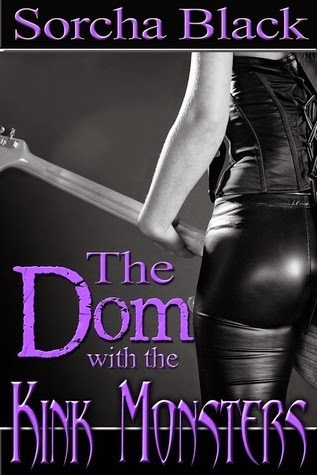 The Dom with the Kink Monsters
by Sorcha Black
The Dom with the Kink Monsters
by Sorcha Black
Sorcha’s Badass Brats are fun, when she’s writing on her own AND when she’s writing with her partners Leia Shaw and Cari Silverwood. If you’re looking for kink in all flavours, with characters who’re often full of tattoos and oodles of attitude, then look no further. I’ve had the opportunity to edit a few of the Badass series, so these stories are like old friends whenever a new one lands on my desk. I needed to fan myself all the time while working on this.
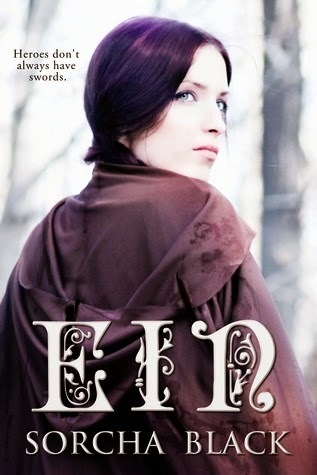 Ein
by Sorcha Black
Ein
by Sorcha Black
Ein is really difficult to classify. It’s full-on fantasy but with lashings of kink and a strong central theme of femininity. This novel touched me on an emotional level, and while there’s *a lot* of heat, the characters are nonetheless touching and well fleshed out. Sorcha takes readers on an emotional rollercoaster ride.

One Step Ahead by Amy Lee Burgess
This is number seven of Amy’s The Wolf Within series. Though each novel can be read as a standalone, I do recommend that readers start from book one. Amy allows us a glimpse into the lives of Pack, wolf shifters who coexist as a secret society among humans. While there’s a degree of heat, Amy places emphasis on her characters’ interpersonal relationships and their emotional sides. It’s fantastic to be on board with this series again.
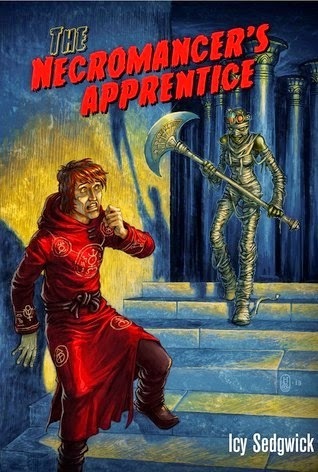 The Necromancer’s Apprentice
by Icy Sedgwick
The Necromancer’s Apprentice
by Icy Sedgwick
Icy Sedgwick takes a story that’s familiar to many of us – that of the Sorcerer’s Apprentice – and she gives it a somewhat darker twist. Her sorcerer is a necromancer, and the apprentice runs afoul of his overweening desire to overreach himself. What I love the most about Icy’s writing is the way she combines dark subject matter with a whiff of whimsy. If you find the idea of nefarious, evil mummies appealing then this novella’s for you. Oh, the illustration on the cover is by the super-fab Daniël Hugo, one of my preferred artists. Design by Carmen Begley.
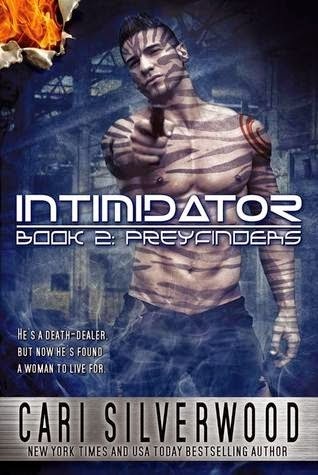 Intimidator
by Cari Silverwood
Intimidator
by Cari Silverwood
Cari Silverwood and I go back a long way, and I’m always happy to edit a few of her novels during the course of the year. Intimidator takes us on a journey with alien warriors who arrive on earth and cut a devastating swathe through a greater evil while taking their pick of earthling women while they’re at it. Lots of action. Lots of kink here. Oh, and I must brag just a wee bit about the cover art, which was designed by my wonderful husband, Thomas Dorman. If you're looking for cover art at a reasonable price, mail him at thomas@helicopterdesign.co.za
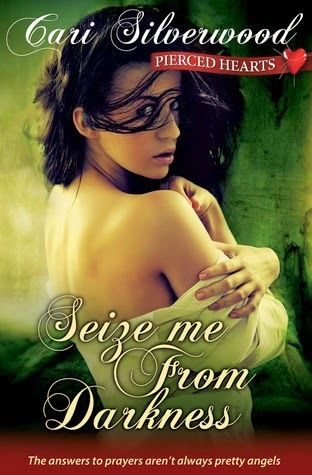 Seize Me From Darkness
by Cari Silverwood
Seize Me From Darkness
by Cari Silverwood
Cari’s Pierced Hearts series is dark, dark, dark, and definitely not for the faint of heart. Not only does she put her characters, male and female, through the emotional wringer, but there’s huge, heaping piles of danger and kink, and one is never quite sure whether the hero is the good or bad guy. Or maybe he’s a bit of both. Either way, she pushes boundaries with these books. You have been warned. Oh, and the cover design is also by my lovely husband.
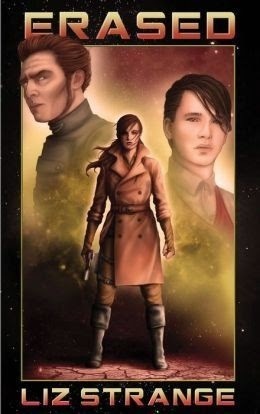 Erased
by Liz Strange
Erased
by Liz Strange
Liz has a handle on telling a kick-ass story that ratchets along at a rapid pace. If you liked Fire Fly, Star Trek and Blade Runner, then this one will appeal to you. Especially awesome is the strong female lead in this space opera. Oh, the illustration is by one of my favourite artists, Milan Colovic.
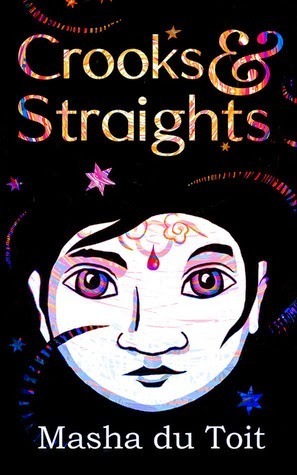 Crooks & Straights
by Masha du Toit
Crooks & Straights
by Masha du Toit
For those of you who’ve a yen for YA urban fantasy that doesn’t have all the Crooks & Straights will offer you a breath of fresh air. The story takes place in Cape Town, South Africa, and plays on our Rainbow Nation’s reputation of being a melting pot of cultures.
usual trappings you’ve grown weary of, then
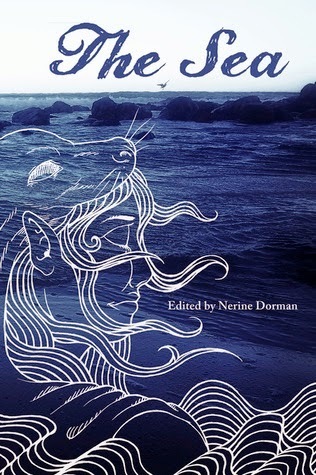 The Sea
anthology
The Sea
anthology
I collected a handful of my favourite authors, and combined them with another handful of fresh voices, to put together The Sea, a collection of short speculative fiction themed around, well, exactly as the title suggests. Unfortunately this anthology fell prey to the closure of Dark Continents Publishing, but we are on the cusp of releasing the revised edition via Crossroad Press, so stay tuned. Cover photography by yours truly, with illustration by Norman Begley, and design by Carmen Begley.
If you’d like further updates about my editing endeavours, and just life as per usual for a madcap wordy person who writes and edits because anything else is unthinkable, then stalk me on Twitter.
Though I am currently focusing on my BA studies in languages and literature, while holding down a day job, I am still available to take on select editing projects during 2015. I can be emailed at nerinedorman@gmail.com.
 The Dom with the Kink Monsters
by Sorcha Black
The Dom with the Kink Monsters
by Sorcha BlackSorcha’s Badass Brats are fun, when she’s writing on her own AND when she’s writing with her partners Leia Shaw and Cari Silverwood. If you’re looking for kink in all flavours, with characters who’re often full of tattoos and oodles of attitude, then look no further. I’ve had the opportunity to edit a few of the Badass series, so these stories are like old friends whenever a new one lands on my desk. I needed to fan myself all the time while working on this.
 Ein
by Sorcha Black
Ein
by Sorcha BlackEin is really difficult to classify. It’s full-on fantasy but with lashings of kink and a strong central theme of femininity. This novel touched me on an emotional level, and while there’s *a lot* of heat, the characters are nonetheless touching and well fleshed out. Sorcha takes readers on an emotional rollercoaster ride.

One Step Ahead by Amy Lee Burgess
This is number seven of Amy’s The Wolf Within series. Though each novel can be read as a standalone, I do recommend that readers start from book one. Amy allows us a glimpse into the lives of Pack, wolf shifters who coexist as a secret society among humans. While there’s a degree of heat, Amy places emphasis on her characters’ interpersonal relationships and their emotional sides. It’s fantastic to be on board with this series again.
 The Necromancer’s Apprentice
by Icy Sedgwick
The Necromancer’s Apprentice
by Icy SedgwickIcy Sedgwick takes a story that’s familiar to many of us – that of the Sorcerer’s Apprentice – and she gives it a somewhat darker twist. Her sorcerer is a necromancer, and the apprentice runs afoul of his overweening desire to overreach himself. What I love the most about Icy’s writing is the way she combines dark subject matter with a whiff of whimsy. If you find the idea of nefarious, evil mummies appealing then this novella’s for you. Oh, the illustration on the cover is by the super-fab Daniël Hugo, one of my preferred artists. Design by Carmen Begley.
 Intimidator
by Cari Silverwood
Intimidator
by Cari SilverwoodCari Silverwood and I go back a long way, and I’m always happy to edit a few of her novels during the course of the year. Intimidator takes us on a journey with alien warriors who arrive on earth and cut a devastating swathe through a greater evil while taking their pick of earthling women while they’re at it. Lots of action. Lots of kink here. Oh, and I must brag just a wee bit about the cover art, which was designed by my wonderful husband, Thomas Dorman. If you're looking for cover art at a reasonable price, mail him at thomas@helicopterdesign.co.za
 Seize Me From Darkness
by Cari Silverwood
Seize Me From Darkness
by Cari SilverwoodCari’s Pierced Hearts series is dark, dark, dark, and definitely not for the faint of heart. Not only does she put her characters, male and female, through the emotional wringer, but there’s huge, heaping piles of danger and kink, and one is never quite sure whether the hero is the good or bad guy. Or maybe he’s a bit of both. Either way, she pushes boundaries with these books. You have been warned. Oh, and the cover design is also by my lovely husband.
 Erased
by Liz Strange
Erased
by Liz StrangeLiz has a handle on telling a kick-ass story that ratchets along at a rapid pace. If you liked Fire Fly, Star Trek and Blade Runner, then this one will appeal to you. Especially awesome is the strong female lead in this space opera. Oh, the illustration is by one of my favourite artists, Milan Colovic.
 Crooks & Straights
by Masha du Toit
Crooks & Straights
by Masha du ToitFor those of you who’ve a yen for YA urban fantasy that doesn’t have all the Crooks & Straights will offer you a breath of fresh air. The story takes place in Cape Town, South Africa, and plays on our Rainbow Nation’s reputation of being a melting pot of cultures.
usual trappings you’ve grown weary of, then
 The Sea
anthology
The Sea
anthologyI collected a handful of my favourite authors, and combined them with another handful of fresh voices, to put together The Sea, a collection of short speculative fiction themed around, well, exactly as the title suggests. Unfortunately this anthology fell prey to the closure of Dark Continents Publishing, but we are on the cusp of releasing the revised edition via Crossroad Press, so stay tuned. Cover photography by yours truly, with illustration by Norman Begley, and design by Carmen Begley.
If you’d like further updates about my editing endeavours, and just life as per usual for a madcap wordy person who writes and edits because anything else is unthinkable, then stalk me on Twitter.
Though I am currently focusing on my BA studies in languages and literature, while holding down a day job, I am still available to take on select editing projects during 2015. I can be emailed at nerinedorman@gmail.com.
Published on January 04, 2015 07:42
January 3, 2015
Top reads for 2014
Okay, if I have to have a list of my absolute top ten favourite books for 2014, this would be it. Bear this in mind, however, that many of these books were not published in 2013 or 2014. In fact, some of them are decades old, and I make no apologies. Some of these are rereads, but for what it’s worth, they stand out for me as the books I enjoyed the most for the year past.
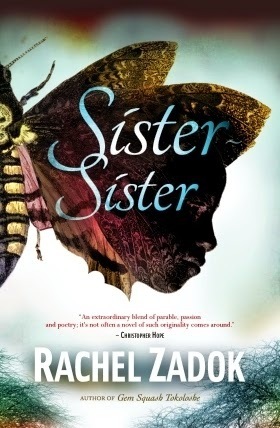 Sister-Sister
by Rachel Zadok
Sister-Sister
by Rachel Zadok
If I have to name one book that completely blew me out of the water, it’s Sister-Sister. Rachel’s prose sings, and there’s a really good reason why I stand by my statement that she’s the secret love child of Poppy Z Brite and Nick Cave. Sister-Sister is part surreal dreamscape, part ghost story, part tragedy. It’s not a story that will settle in a convenient box.
The Lies of Locke Lamora by Scott Lynch
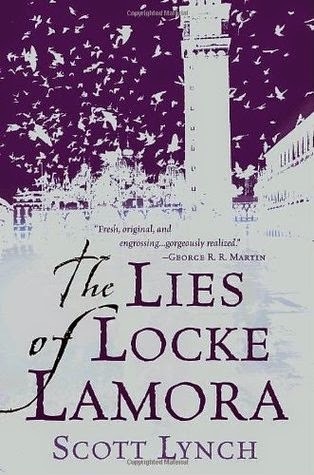 Scott’s writing style put me off a bit as he does a third-person skirting around omniscient, but hell, the sheer cleverness of the writing, the plot twists, the world building … that all conspired to have me in Scott's thrall. The Lies of Locke Lamora gets off to a slow start but patient readers are rewarded by a thrilling conclusion. I honestly could not imagine how Locke would get out of his bind.
Scott’s writing style put me off a bit as he does a third-person skirting around omniscient, but hell, the sheer cleverness of the writing, the plot twists, the world building … that all conspired to have me in Scott's thrall. The Lies of Locke Lamora gets off to a slow start but patient readers are rewarded by a thrilling conclusion. I honestly could not imagine how Locke would get out of his bind.
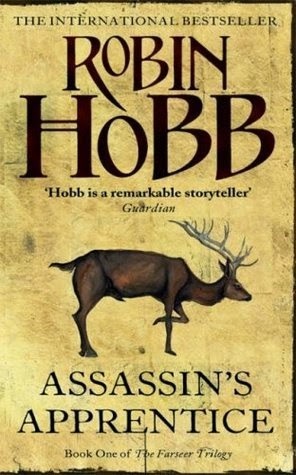
Assassin’s Apprentice by Robin Hobb
This is part of my desire to revisit Fitz’s world. I was completely swept away by Robin’s writing when I was a teen, and her world has lost none of its magic. In fact, I was alive to far more nuances than ever before. Seriously, I can’t wait to dip further into the trilogy. Robin doesn’t pull any punches, and her characters go through hell. And triumphs are bittersweet.
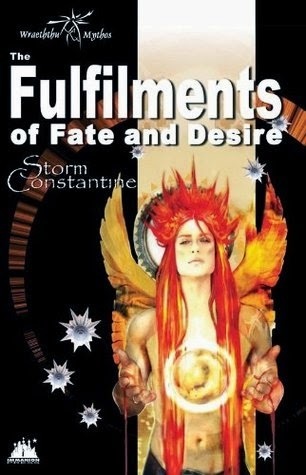
Fulfillments of Fate and Desire by Storm Constantine
Since I’m now writing for Storm’s Wraeththu Mythos, it stands to reason that I need to actually *read* the books. The Devil knows I’ve been threatening to all these years. But Storm’s writing is to be savoured, and I suspect I’ve been holding back because I’m scared of running out of her words. There’s a reason why she’s one of my all-time favourite authors.
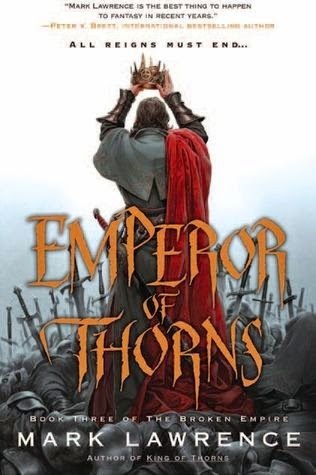 Emperor of Thorns
by Mark Lawrence
Emperor of Thorns
by Mark Lawrence
Mark is wicked. He has a way with words, and I was also really sorry to hit the end of his Broken Empire trilogy that features the doings of our young friend Jorg. Yet this is a fitting conclusion to the saga of the young prince who would be emperor. The pace is cracking, and Jorg’s somewhat astute observations make for some rather dark humour and uncanny wisdom for one so young in a broken world.
Darkspell by Katherine Kerr
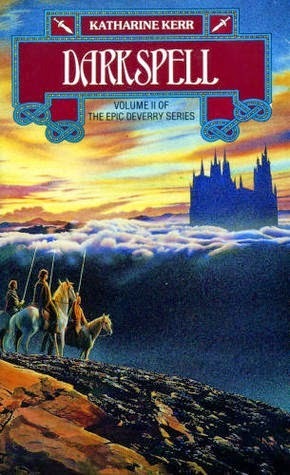 Another reread for me. Katherine Kerr remains a firm favourite, and I’m gradually working my way through her Deverry Cycle in its proper order. She combines Celtic mythology in a fantasy setting, with reincarnation as a theme with strong pagan leanings. Truly, she’s also one of the reasons why I hold by my love of the fantasy genre. There is love without the romance being overbearing, as well as thrilling adventure, mystery and battles. What’s not to love?
Another reread for me. Katherine Kerr remains a firm favourite, and I’m gradually working my way through her Deverry Cycle in its proper order. She combines Celtic mythology in a fantasy setting, with reincarnation as a theme with strong pagan leanings. Truly, she’s also one of the reasons why I hold by my love of the fantasy genre. There is love without the romance being overbearing, as well as thrilling adventure, mystery and battles. What’s not to love?
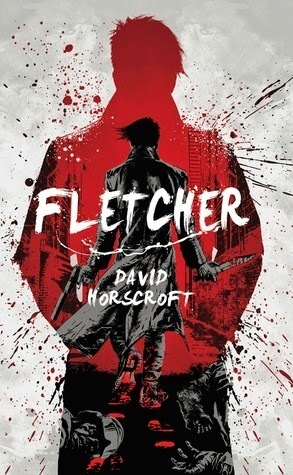
Fletcher by David Horscroft
Technically this book shouldn’t be on this list, since I did the proofreading for the manuscript before it went to print. But I loved the book so much, and it was so thrilling and nasty, that I have become *that* friend who gifts copies to other friends via Amazon just to force them to read it. This is a blood-drenched post-apocalyptic kick-ass thriller featuring my new favourite psychopath. Also, I worry about David. A lot. But he’s a great guy. Really.
The Other Me by Suzanne van Rooyen
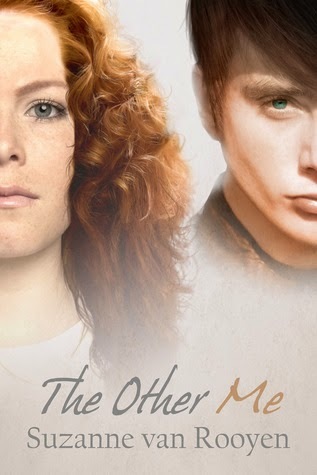 Suzanne van Rooyen writes YA like it’s supposed to be: with a gritty, authentic voice. In this novel, she explores gender identity in such a way that made me hurt so much for the characters. Beautiful, beautiful writing, that stands head and shoulders above nearly all the YA fiction I’ve read in years.
Suzanne van Rooyen writes YA like it’s supposed to be: with a gritty, authentic voice. In this novel, she explores gender identity in such a way that made me hurt so much for the characters. Beautiful, beautiful writing, that stands head and shoulders above nearly all the YA fiction I’ve read in years.
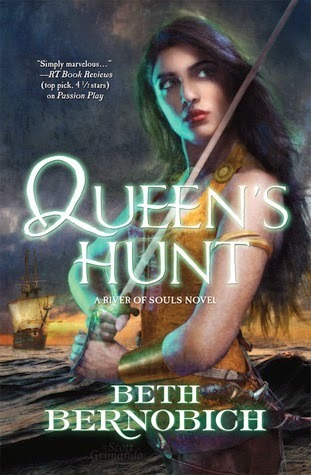 Queen’s Hunt
by Beth Bernobich
Queen’s Hunt
by Beth Bernobich
I must thank Cat Hellisen for introducing me to Beth’s writing. (For good measure, do go grab Cat's books while you're at it.) I still haven’t gotten round to reading the third in Beth's epic, but what I can say is that this is solid fantasy that delivers. There’s magic, intrigue and whiffs of reincarnation, as the characters navigate a dangerous path. I’d recommend this to folks who enjoy Robin Hobb.
The City by Stella Gemmell
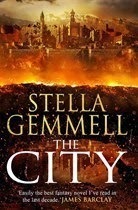 Last, but not least, I have to mention The City. It was not an easy book but hell, its sheer magnitude was something else. The real star was not so much the people who inhabited the City, but rather the City itself, built layer upon layer, and stuffed to the eaves with secrets. Some might find the emphasis on the setting rather than narrative tedious but I just loved every last bit of description.
Last, but not least, I have to mention The City. It was not an easy book but hell, its sheer magnitude was something else. The real star was not so much the people who inhabited the City, but rather the City itself, built layer upon layer, and stuffed to the eaves with secrets. Some might find the emphasis on the setting rather than narrative tedious but I just loved every last bit of description.
 Sister-Sister
by Rachel Zadok
Sister-Sister
by Rachel ZadokIf I have to name one book that completely blew me out of the water, it’s Sister-Sister. Rachel’s prose sings, and there’s a really good reason why I stand by my statement that she’s the secret love child of Poppy Z Brite and Nick Cave. Sister-Sister is part surreal dreamscape, part ghost story, part tragedy. It’s not a story that will settle in a convenient box.
The Lies of Locke Lamora by Scott Lynch
 Scott’s writing style put me off a bit as he does a third-person skirting around omniscient, but hell, the sheer cleverness of the writing, the plot twists, the world building … that all conspired to have me in Scott's thrall. The Lies of Locke Lamora gets off to a slow start but patient readers are rewarded by a thrilling conclusion. I honestly could not imagine how Locke would get out of his bind.
Scott’s writing style put me off a bit as he does a third-person skirting around omniscient, but hell, the sheer cleverness of the writing, the plot twists, the world building … that all conspired to have me in Scott's thrall. The Lies of Locke Lamora gets off to a slow start but patient readers are rewarded by a thrilling conclusion. I honestly could not imagine how Locke would get out of his bind.
Assassin’s Apprentice by Robin Hobb
This is part of my desire to revisit Fitz’s world. I was completely swept away by Robin’s writing when I was a teen, and her world has lost none of its magic. In fact, I was alive to far more nuances than ever before. Seriously, I can’t wait to dip further into the trilogy. Robin doesn’t pull any punches, and her characters go through hell. And triumphs are bittersweet.

Fulfillments of Fate and Desire by Storm Constantine
Since I’m now writing for Storm’s Wraeththu Mythos, it stands to reason that I need to actually *read* the books. The Devil knows I’ve been threatening to all these years. But Storm’s writing is to be savoured, and I suspect I’ve been holding back because I’m scared of running out of her words. There’s a reason why she’s one of my all-time favourite authors.
 Emperor of Thorns
by Mark Lawrence
Emperor of Thorns
by Mark LawrenceMark is wicked. He has a way with words, and I was also really sorry to hit the end of his Broken Empire trilogy that features the doings of our young friend Jorg. Yet this is a fitting conclusion to the saga of the young prince who would be emperor. The pace is cracking, and Jorg’s somewhat astute observations make for some rather dark humour and uncanny wisdom for one so young in a broken world.
Darkspell by Katherine Kerr
 Another reread for me. Katherine Kerr remains a firm favourite, and I’m gradually working my way through her Deverry Cycle in its proper order. She combines Celtic mythology in a fantasy setting, with reincarnation as a theme with strong pagan leanings. Truly, she’s also one of the reasons why I hold by my love of the fantasy genre. There is love without the romance being overbearing, as well as thrilling adventure, mystery and battles. What’s not to love?
Another reread for me. Katherine Kerr remains a firm favourite, and I’m gradually working my way through her Deverry Cycle in its proper order. She combines Celtic mythology in a fantasy setting, with reincarnation as a theme with strong pagan leanings. Truly, she’s also one of the reasons why I hold by my love of the fantasy genre. There is love without the romance being overbearing, as well as thrilling adventure, mystery and battles. What’s not to love?
Fletcher by David Horscroft
Technically this book shouldn’t be on this list, since I did the proofreading for the manuscript before it went to print. But I loved the book so much, and it was so thrilling and nasty, that I have become *that* friend who gifts copies to other friends via Amazon just to force them to read it. This is a blood-drenched post-apocalyptic kick-ass thriller featuring my new favourite psychopath. Also, I worry about David. A lot. But he’s a great guy. Really.
The Other Me by Suzanne van Rooyen
 Suzanne van Rooyen writes YA like it’s supposed to be: with a gritty, authentic voice. In this novel, she explores gender identity in such a way that made me hurt so much for the characters. Beautiful, beautiful writing, that stands head and shoulders above nearly all the YA fiction I’ve read in years.
Suzanne van Rooyen writes YA like it’s supposed to be: with a gritty, authentic voice. In this novel, she explores gender identity in such a way that made me hurt so much for the characters. Beautiful, beautiful writing, that stands head and shoulders above nearly all the YA fiction I’ve read in years. Queen’s Hunt
by Beth Bernobich
Queen’s Hunt
by Beth BernobichI must thank Cat Hellisen for introducing me to Beth’s writing. (For good measure, do go grab Cat's books while you're at it.) I still haven’t gotten round to reading the third in Beth's epic, but what I can say is that this is solid fantasy that delivers. There’s magic, intrigue and whiffs of reincarnation, as the characters navigate a dangerous path. I’d recommend this to folks who enjoy Robin Hobb.
The City by Stella Gemmell
 Last, but not least, I have to mention The City. It was not an easy book but hell, its sheer magnitude was something else. The real star was not so much the people who inhabited the City, but rather the City itself, built layer upon layer, and stuffed to the eaves with secrets. Some might find the emphasis on the setting rather than narrative tedious but I just loved every last bit of description.
Last, but not least, I have to mention The City. It was not an easy book but hell, its sheer magnitude was something else. The real star was not so much the people who inhabited the City, but rather the City itself, built layer upon layer, and stuffed to the eaves with secrets. Some might find the emphasis on the setting rather than narrative tedious but I just loved every last bit of description.
Published on January 03, 2015 14:01
December 16, 2014
Amma gonna go all Smaug on yer arse
This week I read an article online that actually made me want to get all Smaug on the writer’s arse. Said individual was having a go at the fantasy genre, pretty much bitching about the standard tropes of elves, orcs, wizards, et al, and how set in its ways the fantasy genre has become. Blah, blah, blah, dwarves are boring etc etc. That whole vibe.
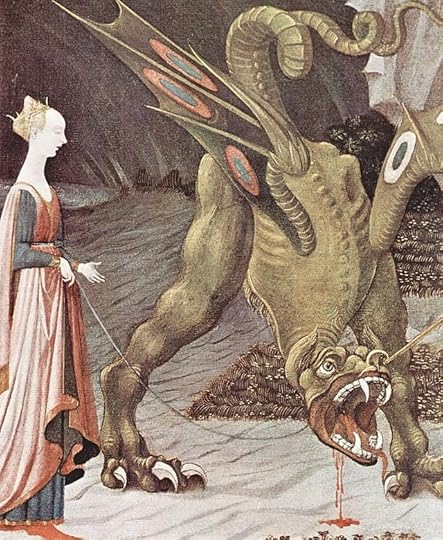 Image: Wiki CommonsThe writer bemoaned the fact that there were so few authors willing to push boundaries, and yes, to a degree I’m tempted to agree. Tropes exist. But here’s the rub – it’s what the author *does* with these tropes that matters.
Image: Wiki CommonsThe writer bemoaned the fact that there were so few authors willing to push boundaries, and yes, to a degree I’m tempted to agree. Tropes exist. But here’s the rub – it’s what the author *does* with these tropes that matters.
(Some fellow authors might also sympathise when I mention about going too far out on a limb, and encountering reader resistance to ideas that are just so far off the beaten path.)
To this end, I feel it’s important that all established and aspiring fantasy writers should read widely within (and outside) their genre. Know your classics. Go look up the less mainstream material too. If a book has many negative reviews not related to grammar gremlins, ask yourself why is it that a book is controversial. Go read the book yourself, and make up your own mind.
(I did that recently with Karen Miller’s Empress , and I fucking loved the book. Ditto for everything of Mark Lawrence’s that I’ve read so far. None of these are everyone’s cup of tea.)
Hell, for good measure, load up on non-fiction too. A subscription to National Geographic will expose you to so many ideas. Keep up to speed with current affairs. Watch documentaries. Challenge yourself with ideas that make you uncomfortable. Ask yourself why you are uneasy. Then see if you can channel some of that into your writing.
Now, if you’re absolutely hellbent on writing about dwarves, elves and orcs, ask yourself this: what can you bring to the trope to make it uniquely your own and not some thinly veiled Lord of the Rings fanfiction with the serial numbers filed off (though fanfiction has its place, no matter what the critics say).
Tropes offer us a recognised framework upon which we can hang a story. If we look at Joseph Campbell’s conception of the Monomyth or how folk tales often have common occurrences and themes, we have shining examples of why touchstones of familiarity are so important. They satisfy a deep-rooted need for those who engage in the appreciation of storycraft. Take those away, and it becomes difficult to relate to a story.
You might whinge that as readers and writers we’ve become lazy, but I’ll argue that we need our shared themes as common ground and a launch pad for the worlds we build. While fiction plays with alternative realities, it is in and of itself not necessarily an accurate depiction of reality.
Real life doesn’t always tie up neatly. The hero doesn’t always slay the dragon. Sometimes the princess is an evil, conniving bitch. When we read (or write) fantasy, it is because we wish to escape from the mundanity our day-to-day existence. We therefore (often) seek some sort of ideal.
Our needs for particular stories are also different. there are days when I’m up for a challenge, and something radically different from the norm (like Storm Constantine’s hermaphrodite Wraeththu) is exactly what I need. Other times I want my dragonriders flying across Pern’s skies or even a few sneaky hobbitses, no matter how many times I’ve read Tolkien’s words.
Yes, I think there are some fantasy novels out there that wear their influences on their sleeves (hello, Terry Brooks, Raymond E Feist) but I’ll still dip into their worlds from time to time and enjoy myself, despite the obvious parallels. Or I can hit up Ursula K Le Guin and have my world stretched to the point where nothing is familiar. You have to consider the context. And also, bear in mind, that certain *types* of fantasy fiction will naturally be more accessible to particular readers more so than others. You opt for terra incognita or stick to the well-worn paths. To say that one is inferior to the other is missing the point.
In closing, I’d like to charge you with the command to write the stories *you* want to read. That’s what matters, ultimately. Also, don’t apologise for your choice in reading or writing matter, and if you want vampire elves riding unicorns, DO IT. Life’s too short and brutal to pander to others’ whims.
 Image: Wiki CommonsThe writer bemoaned the fact that there were so few authors willing to push boundaries, and yes, to a degree I’m tempted to agree. Tropes exist. But here’s the rub – it’s what the author *does* with these tropes that matters.
Image: Wiki CommonsThe writer bemoaned the fact that there were so few authors willing to push boundaries, and yes, to a degree I’m tempted to agree. Tropes exist. But here’s the rub – it’s what the author *does* with these tropes that matters.(Some fellow authors might also sympathise when I mention about going too far out on a limb, and encountering reader resistance to ideas that are just so far off the beaten path.)
To this end, I feel it’s important that all established and aspiring fantasy writers should read widely within (and outside) their genre. Know your classics. Go look up the less mainstream material too. If a book has many negative reviews not related to grammar gremlins, ask yourself why is it that a book is controversial. Go read the book yourself, and make up your own mind.
(I did that recently with Karen Miller’s Empress , and I fucking loved the book. Ditto for everything of Mark Lawrence’s that I’ve read so far. None of these are everyone’s cup of tea.)
Hell, for good measure, load up on non-fiction too. A subscription to National Geographic will expose you to so many ideas. Keep up to speed with current affairs. Watch documentaries. Challenge yourself with ideas that make you uncomfortable. Ask yourself why you are uneasy. Then see if you can channel some of that into your writing.
Now, if you’re absolutely hellbent on writing about dwarves, elves and orcs, ask yourself this: what can you bring to the trope to make it uniquely your own and not some thinly veiled Lord of the Rings fanfiction with the serial numbers filed off (though fanfiction has its place, no matter what the critics say).
Tropes offer us a recognised framework upon which we can hang a story. If we look at Joseph Campbell’s conception of the Monomyth or how folk tales often have common occurrences and themes, we have shining examples of why touchstones of familiarity are so important. They satisfy a deep-rooted need for those who engage in the appreciation of storycraft. Take those away, and it becomes difficult to relate to a story.
You might whinge that as readers and writers we’ve become lazy, but I’ll argue that we need our shared themes as common ground and a launch pad for the worlds we build. While fiction plays with alternative realities, it is in and of itself not necessarily an accurate depiction of reality.
Real life doesn’t always tie up neatly. The hero doesn’t always slay the dragon. Sometimes the princess is an evil, conniving bitch. When we read (or write) fantasy, it is because we wish to escape from the mundanity our day-to-day existence. We therefore (often) seek some sort of ideal.
Our needs for particular stories are also different. there are days when I’m up for a challenge, and something radically different from the norm (like Storm Constantine’s hermaphrodite Wraeththu) is exactly what I need. Other times I want my dragonriders flying across Pern’s skies or even a few sneaky hobbitses, no matter how many times I’ve read Tolkien’s words.
Yes, I think there are some fantasy novels out there that wear their influences on their sleeves (hello, Terry Brooks, Raymond E Feist) but I’ll still dip into their worlds from time to time and enjoy myself, despite the obvious parallels. Or I can hit up Ursula K Le Guin and have my world stretched to the point where nothing is familiar. You have to consider the context. And also, bear in mind, that certain *types* of fantasy fiction will naturally be more accessible to particular readers more so than others. You opt for terra incognita or stick to the well-worn paths. To say that one is inferior to the other is missing the point.
In closing, I’d like to charge you with the command to write the stories *you* want to read. That’s what matters, ultimately. Also, don’t apologise for your choice in reading or writing matter, and if you want vampire elves riding unicorns, DO IT. Life’s too short and brutal to pander to others’ whims.
Published on December 16, 2014 00:22
December 10, 2014
Magic of Thieves by C Greenwood #reviews
Title: Magic of Thieves (Legends of Dimmingwood #1)
Author: C Greenwood, 2012
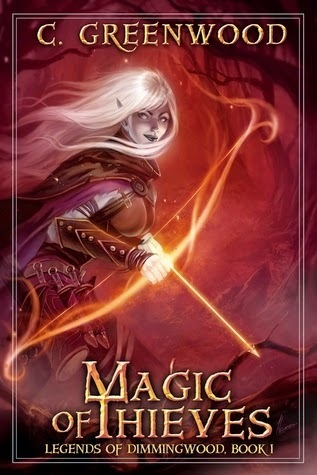 Ilan is orphaned at a young age, and though author C Greenwood doesn’t exactly name Ilan’s race, the pointy ears and ability to do magic all point at elves. Though Ilan’s parents try to get her to safety, as a last-ditch attempt to protect her when soldiers come to hunt them down, things go wrong. Instead of reaching a haven where Ilan might be afforded the opportunity to enjoy a relatively normal upbringing, Ilan ends up at the mercy of the thieves of the Dimmingwood when the peddler with whom she is travelling is ambushed.
Ilan is orphaned at a young age, and though author C Greenwood doesn’t exactly name Ilan’s race, the pointy ears and ability to do magic all point at elves. Though Ilan’s parents try to get her to safety, as a last-ditch attempt to protect her when soldiers come to hunt them down, things go wrong. Instead of reaching a haven where Ilan might be afforded the opportunity to enjoy a relatively normal upbringing, Ilan ends up at the mercy of the thieves of the Dimmingwood when the peddler with whom she is travelling is ambushed.
And that is how Ilan becomes a mascot of sorts, for a band of thieves, and has a thoroughly unconventional upbringing for a young lady. She might be well versed in the ways of the forest, but she lacks social graces until she intercedes to save the life of a young priest – and an unlikely friendship comes into being.
There really isn’t much to book one of this series other than offering readers an origin story in which we are introduced to the protagonist, and get to share her back story. This might bother some, but I enjoy this sort of detail. Greenwood’s writing is a little clunky at times, and I often found myself wishing the author would go deeper with the layering. Events, like the time Ilan finds herself a McGuffin, she acts but doesn’t question her motivations, which I felt moved a bit quickly for what was in fact a momentous event. Also the world building remains frustratingly light. I wanted to smell the leaf mould, hear which birds were singing, and see how the sunlight dapples the forest floor. This sort of detail, in my mind, is intrinsic to fantasy, and I wanted more of it.
Yes, Ilan can be a bit of a brat, but that’s understandable considering her circumstances, and I really took a shine to her despite her mood swings. She’s a teen, and acts it.
On the whole, this was a fun, engaging story that shows plenty of promise. If you’re looking for a light fantasy adventure with a strong, morally ambiguous female protagonist, then this might be your thing. Though I’m not experiencing a burning rush to go out and immediately buy the next novel, my interest is sufficiently piqued that if book 2 were to land on my desk, I would go on with the story. This one's a free read, so give it a shot.
Author: C Greenwood, 2012
 Ilan is orphaned at a young age, and though author C Greenwood doesn’t exactly name Ilan’s race, the pointy ears and ability to do magic all point at elves. Though Ilan’s parents try to get her to safety, as a last-ditch attempt to protect her when soldiers come to hunt them down, things go wrong. Instead of reaching a haven where Ilan might be afforded the opportunity to enjoy a relatively normal upbringing, Ilan ends up at the mercy of the thieves of the Dimmingwood when the peddler with whom she is travelling is ambushed.
Ilan is orphaned at a young age, and though author C Greenwood doesn’t exactly name Ilan’s race, the pointy ears and ability to do magic all point at elves. Though Ilan’s parents try to get her to safety, as a last-ditch attempt to protect her when soldiers come to hunt them down, things go wrong. Instead of reaching a haven where Ilan might be afforded the opportunity to enjoy a relatively normal upbringing, Ilan ends up at the mercy of the thieves of the Dimmingwood when the peddler with whom she is travelling is ambushed.And that is how Ilan becomes a mascot of sorts, for a band of thieves, and has a thoroughly unconventional upbringing for a young lady. She might be well versed in the ways of the forest, but she lacks social graces until she intercedes to save the life of a young priest – and an unlikely friendship comes into being.
There really isn’t much to book one of this series other than offering readers an origin story in which we are introduced to the protagonist, and get to share her back story. This might bother some, but I enjoy this sort of detail. Greenwood’s writing is a little clunky at times, and I often found myself wishing the author would go deeper with the layering. Events, like the time Ilan finds herself a McGuffin, she acts but doesn’t question her motivations, which I felt moved a bit quickly for what was in fact a momentous event. Also the world building remains frustratingly light. I wanted to smell the leaf mould, hear which birds were singing, and see how the sunlight dapples the forest floor. This sort of detail, in my mind, is intrinsic to fantasy, and I wanted more of it.
Yes, Ilan can be a bit of a brat, but that’s understandable considering her circumstances, and I really took a shine to her despite her mood swings. She’s a teen, and acts it.
On the whole, this was a fun, engaging story that shows plenty of promise. If you’re looking for a light fantasy adventure with a strong, morally ambiguous female protagonist, then this might be your thing. Though I’m not experiencing a burning rush to go out and immediately buy the next novel, my interest is sufficiently piqued that if book 2 were to land on my desk, I would go on with the story. This one's a free read, so give it a shot.
Published on December 10, 2014 12:08
December 2, 2014
Apocalypse Now Now by Charlie Human #review
Title:
Apocalypse Now Now
Author: Charlie Human
Publisher: Umuzi, 2013
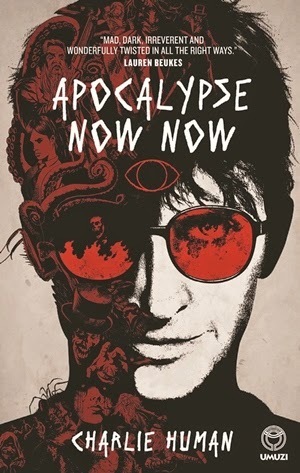 In Apocalypse Now Now, we discover right from the opening chapter that Baxter Zevcenko is, to put it mildly, not a very nice boy. At the tender age of 16, he is already a porn-peddling kingpin involved with school gangs, and he’s quite unapologetic about his calling in life. In his mind, everything’s perfect. He has enough cash, he’s manipulating others to do what he wants them to, and he has a hot girlfriend, Esmé.
In Apocalypse Now Now, we discover right from the opening chapter that Baxter Zevcenko is, to put it mildly, not a very nice boy. At the tender age of 16, he is already a porn-peddling kingpin involved with school gangs, and he’s quite unapologetic about his calling in life. In his mind, everything’s perfect. He has enough cash, he’s manipulating others to do what he wants them to, and he has a hot girlfriend, Esmé.
Of course this is where everything starts to go south. It begins with the threat of a serial killer looming, and gets personal when Esmé goes missing, presumed kidnapped by the serial killer. Baxter’s only clue is a mysterious, glowing tooth found in Esmé’s room.
What follows is Baxter’s descent into the Mother City’s supernatural underground. Everything that he thought he knew is overturned. Fortunately, he’s not on his own, as he teams up with a mystical, ex-special forces bounty hunter, Jackson Ronin.
Their quest sees them tangling with elemental spirits and zombies, and Baxter gradually comes to realise that he stands at the centre of an eons-old conflict between a mantis and an octopus god—shades of HP Lovecraft much?
Baxter is not the hero we asked for, but he’s only one who’s going to take the blame for averting an impending apocalypse – a task for which no one will thank him due to what he has to do in order to come out on top.
Apocalypse Now Now is a gritty, action-packed quest that playfully subverts many of the tropes we encounter in popular urban fantasy, from zombies to dwarves, and generous lashings of local flavour when we encounter creatures such as a springbok faun and tokoloshes. It’s easy to see where the “Tarantino meets Neil Gaiman” applies, but I couldn’t quite help thinking of fun films like Men in Black. And, in a similar fashion, Apocalypse Now Now doesn’t take itself too seriously.
With that in mind, if you’re looking for a madcap romp filled with plenty of pop culture references and sometimes dizzying plot reversals, then you’ll likely enjoy sinking your teeth into this one. Though you may want to sit down and catch your breath afterwards. It’s a helluva ride.
Author: Charlie Human
Publisher: Umuzi, 2013
 In Apocalypse Now Now, we discover right from the opening chapter that Baxter Zevcenko is, to put it mildly, not a very nice boy. At the tender age of 16, he is already a porn-peddling kingpin involved with school gangs, and he’s quite unapologetic about his calling in life. In his mind, everything’s perfect. He has enough cash, he’s manipulating others to do what he wants them to, and he has a hot girlfriend, Esmé.
In Apocalypse Now Now, we discover right from the opening chapter that Baxter Zevcenko is, to put it mildly, not a very nice boy. At the tender age of 16, he is already a porn-peddling kingpin involved with school gangs, and he’s quite unapologetic about his calling in life. In his mind, everything’s perfect. He has enough cash, he’s manipulating others to do what he wants them to, and he has a hot girlfriend, Esmé.Of course this is where everything starts to go south. It begins with the threat of a serial killer looming, and gets personal when Esmé goes missing, presumed kidnapped by the serial killer. Baxter’s only clue is a mysterious, glowing tooth found in Esmé’s room.
What follows is Baxter’s descent into the Mother City’s supernatural underground. Everything that he thought he knew is overturned. Fortunately, he’s not on his own, as he teams up with a mystical, ex-special forces bounty hunter, Jackson Ronin.
Their quest sees them tangling with elemental spirits and zombies, and Baxter gradually comes to realise that he stands at the centre of an eons-old conflict between a mantis and an octopus god—shades of HP Lovecraft much?
Baxter is not the hero we asked for, but he’s only one who’s going to take the blame for averting an impending apocalypse – a task for which no one will thank him due to what he has to do in order to come out on top.
Apocalypse Now Now is a gritty, action-packed quest that playfully subverts many of the tropes we encounter in popular urban fantasy, from zombies to dwarves, and generous lashings of local flavour when we encounter creatures such as a springbok faun and tokoloshes. It’s easy to see where the “Tarantino meets Neil Gaiman” applies, but I couldn’t quite help thinking of fun films like Men in Black. And, in a similar fashion, Apocalypse Now Now doesn’t take itself too seriously.
With that in mind, if you’re looking for a madcap romp filled with plenty of pop culture references and sometimes dizzying plot reversals, then you’ll likely enjoy sinking your teeth into this one. Though you may want to sit down and catch your breath afterwards. It’s a helluva ride.
Published on December 02, 2014 11:08



